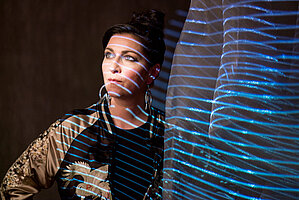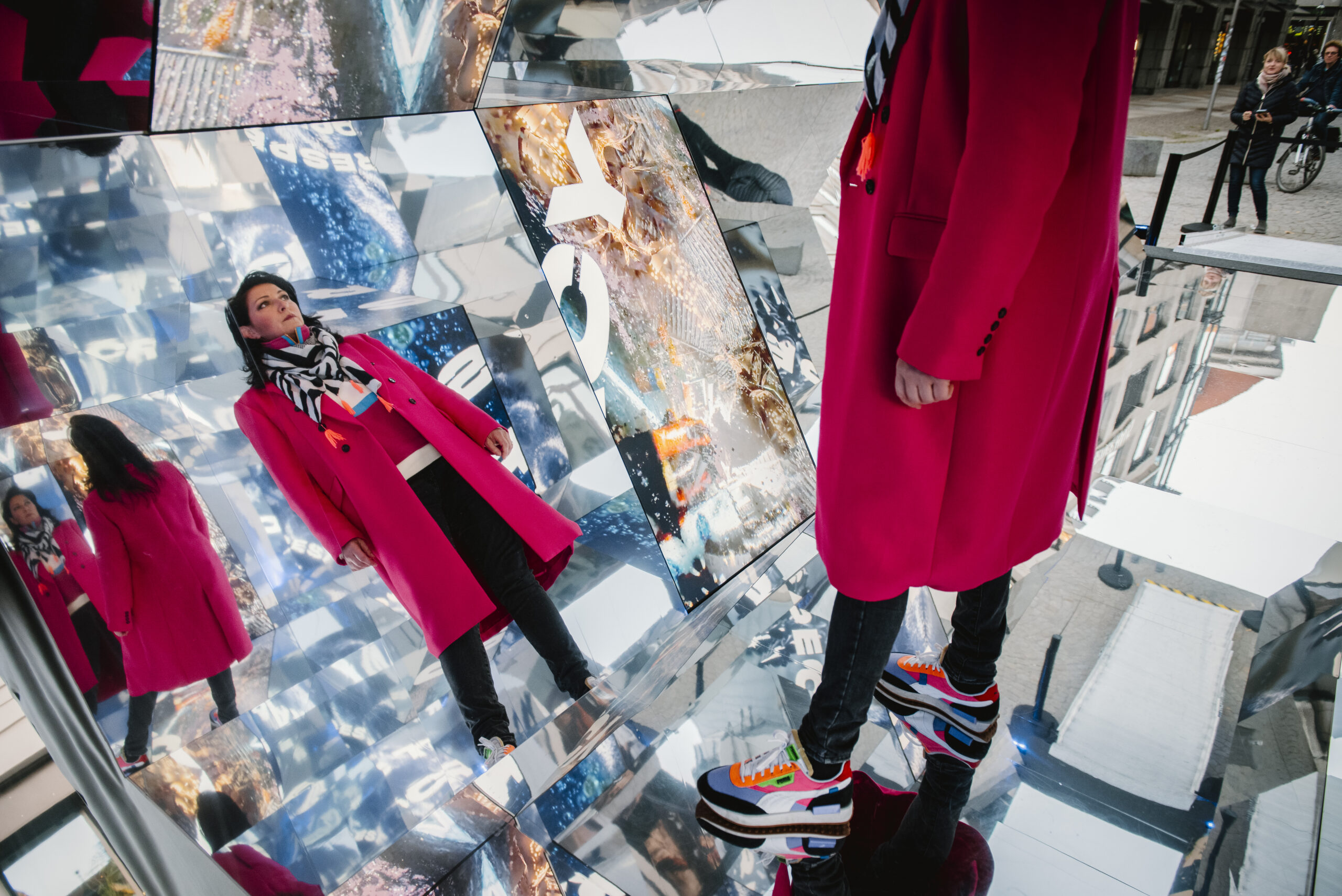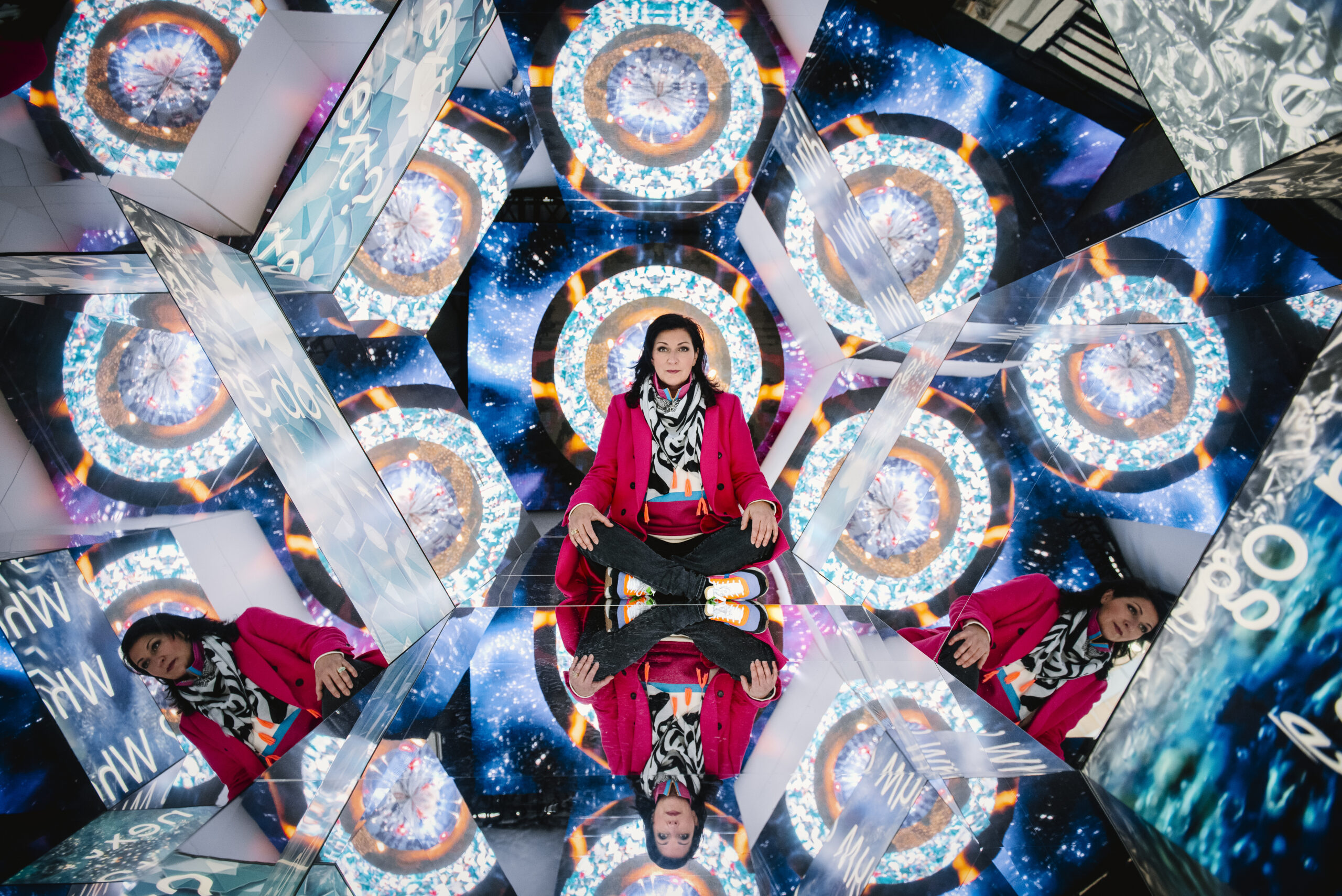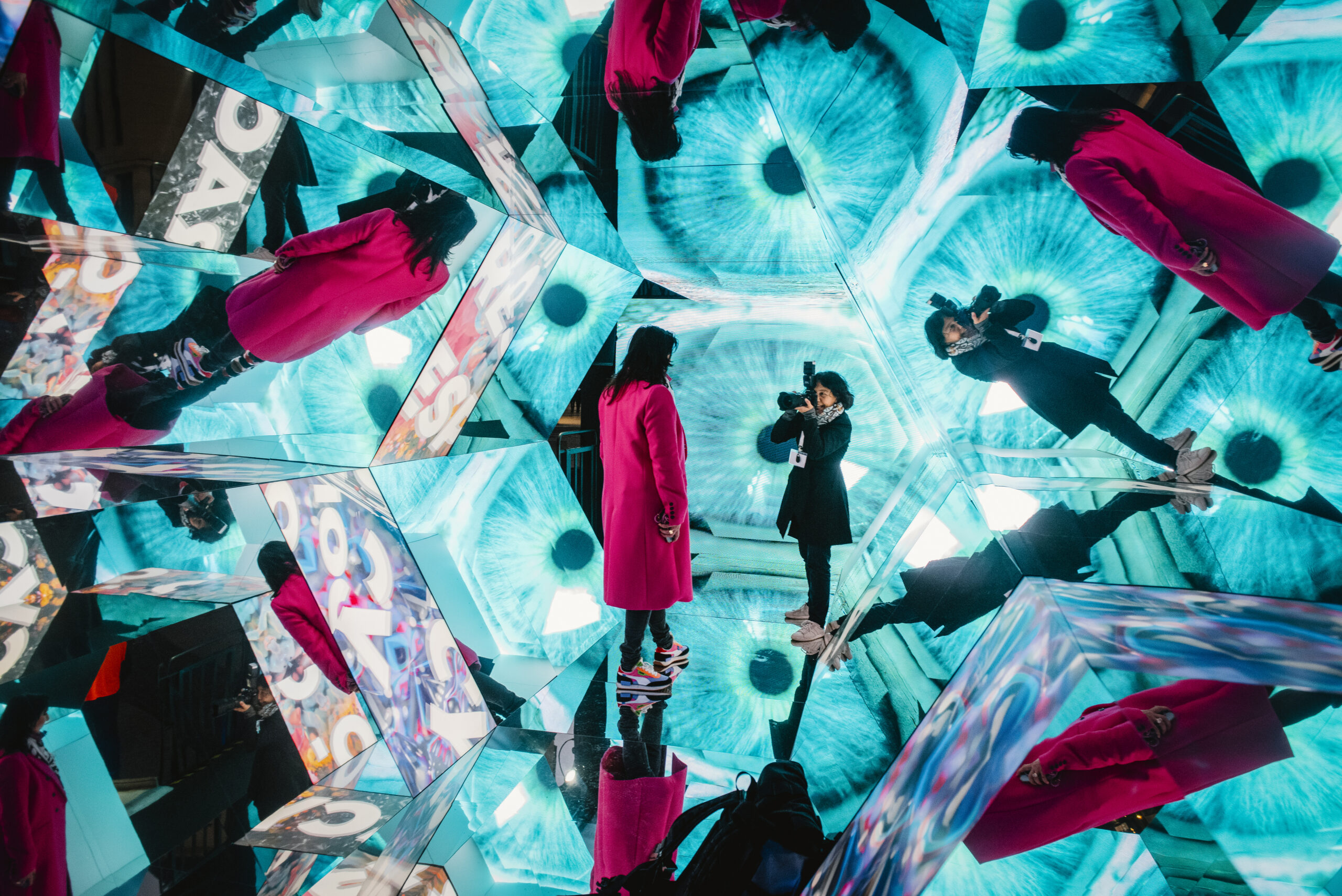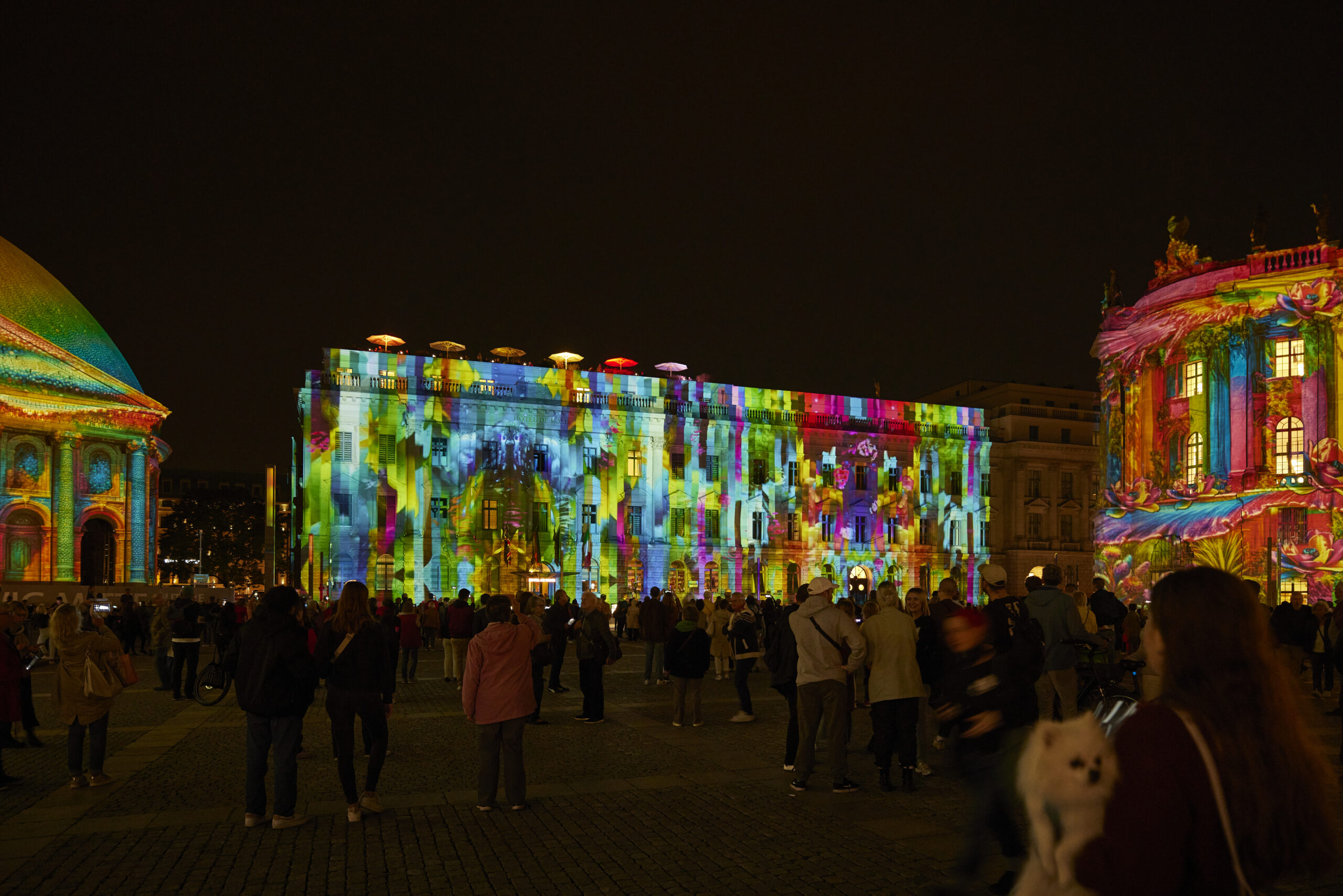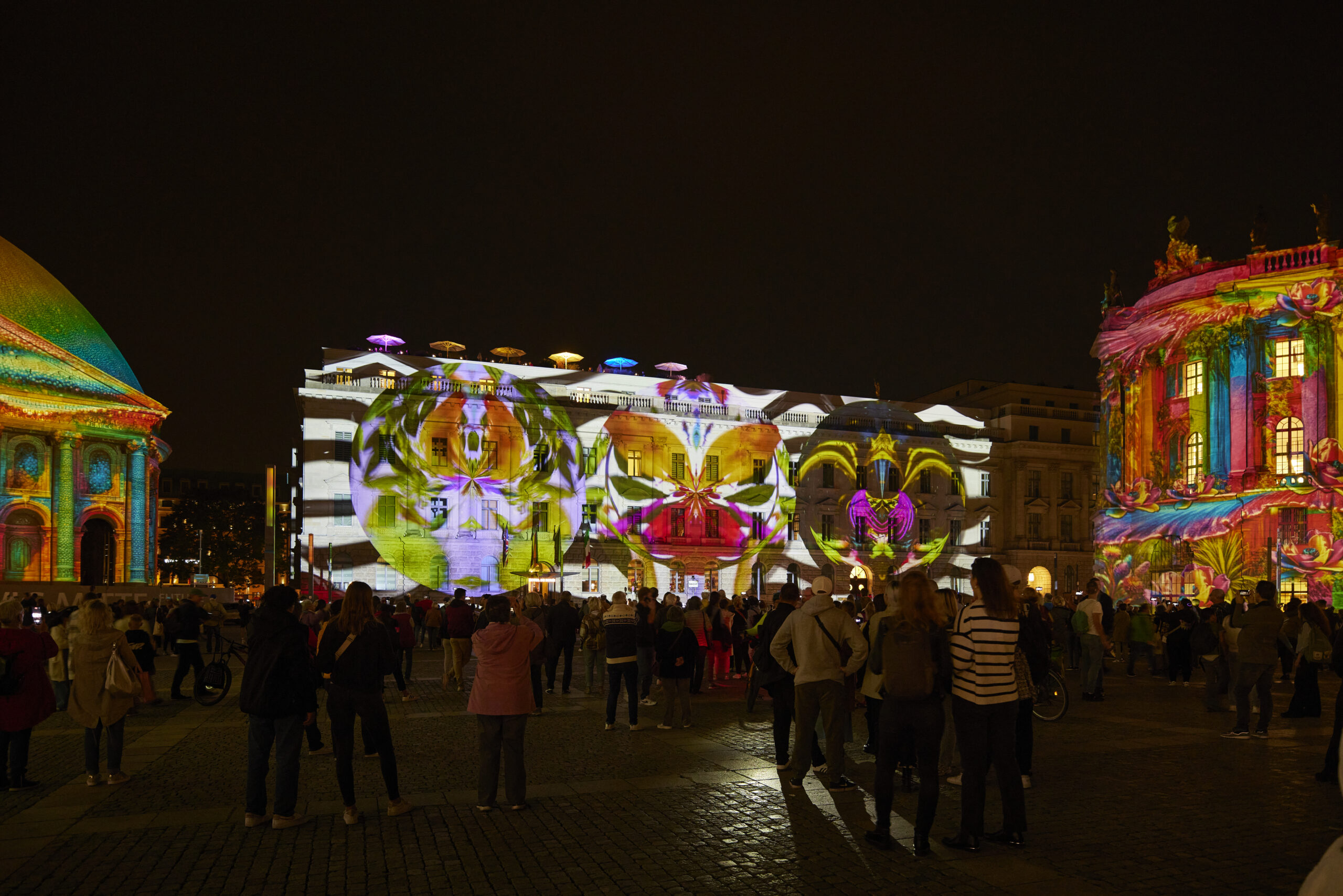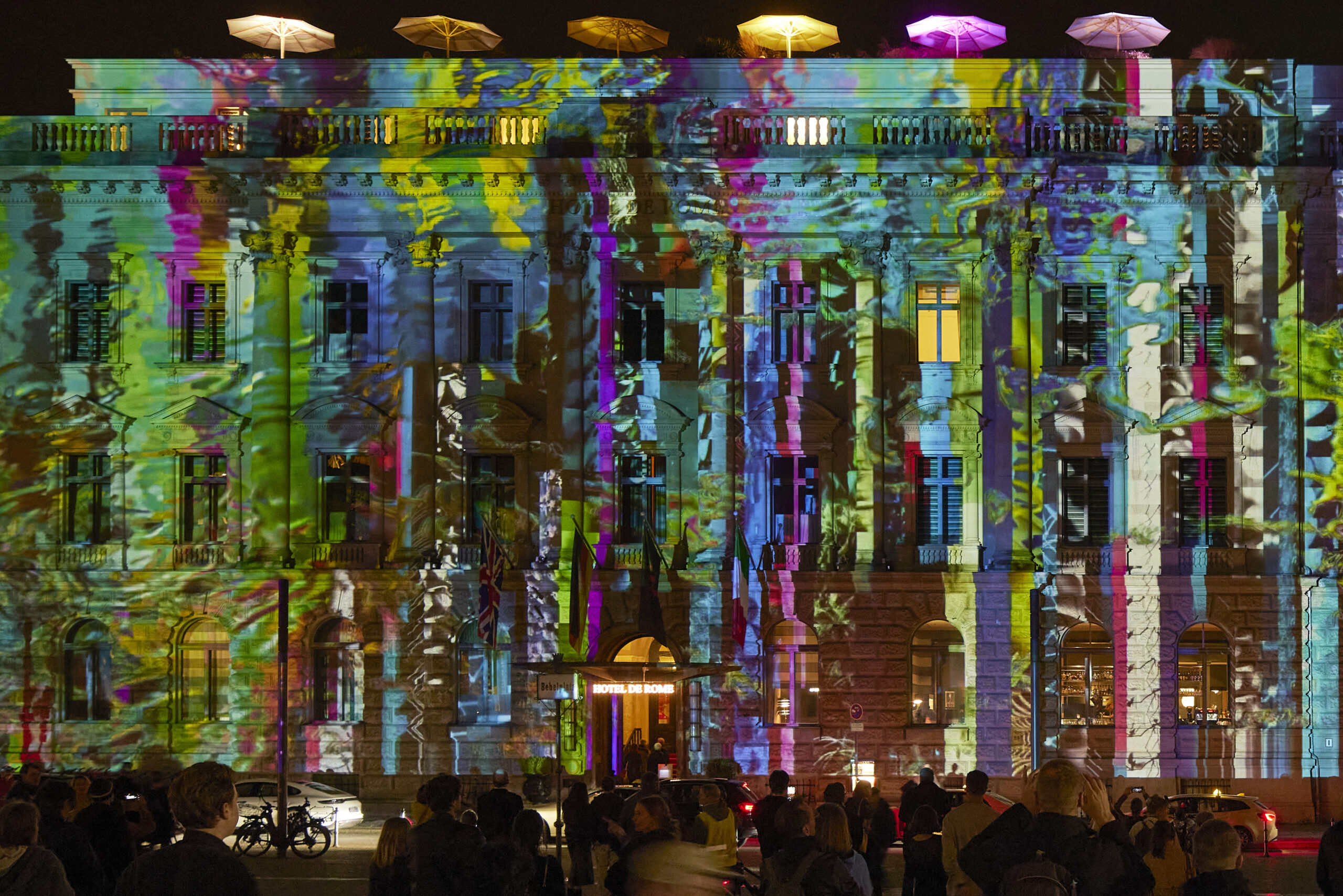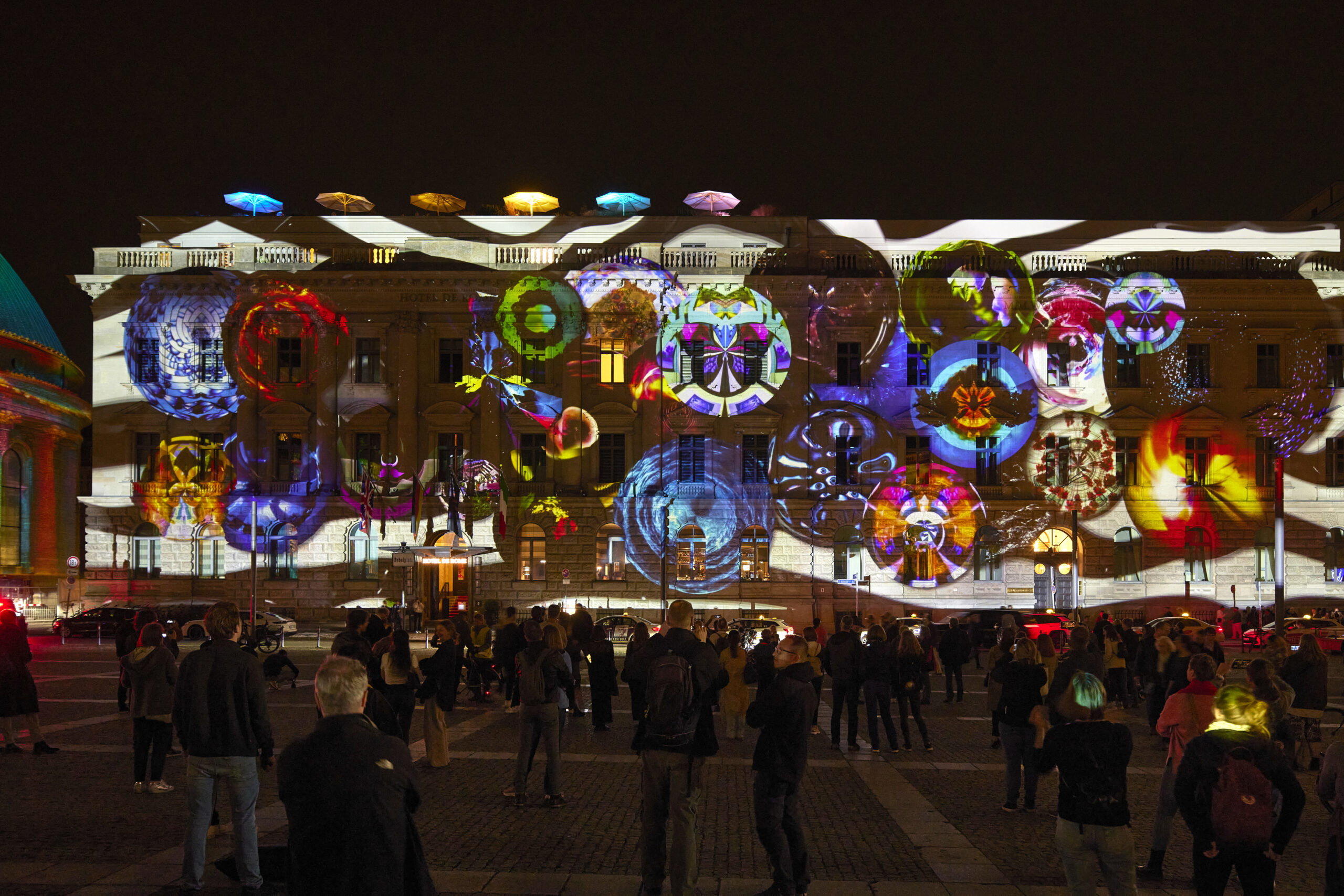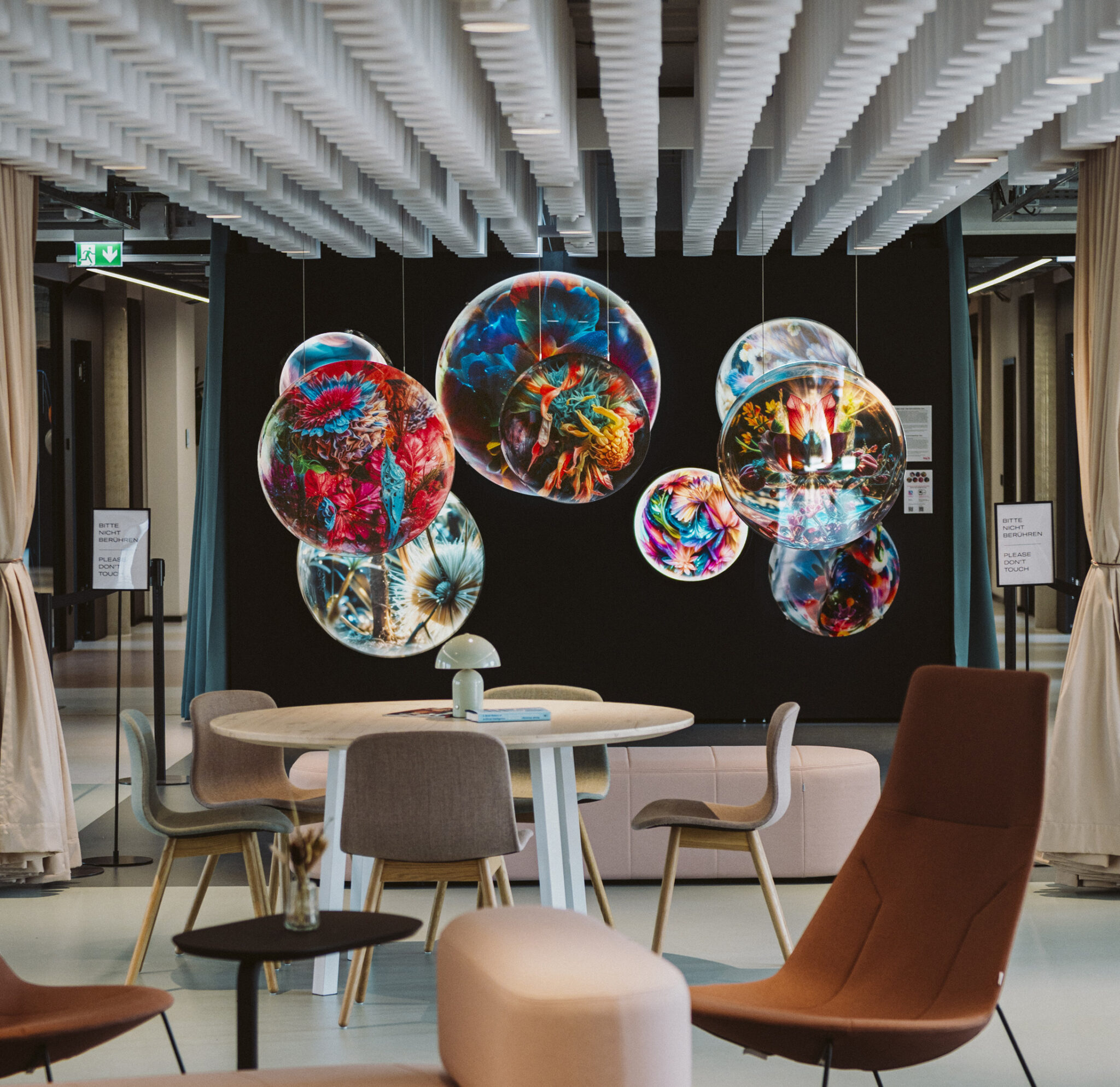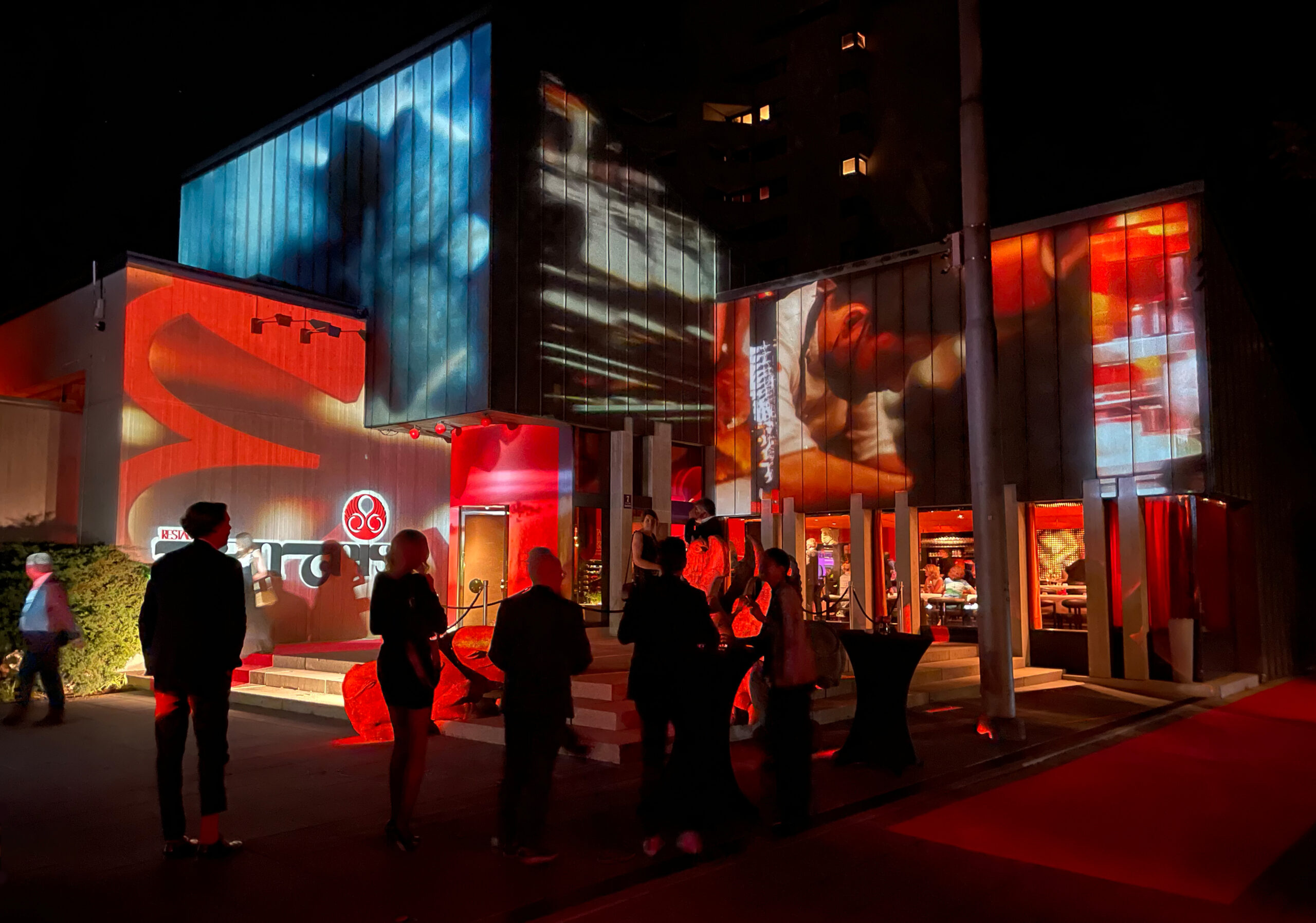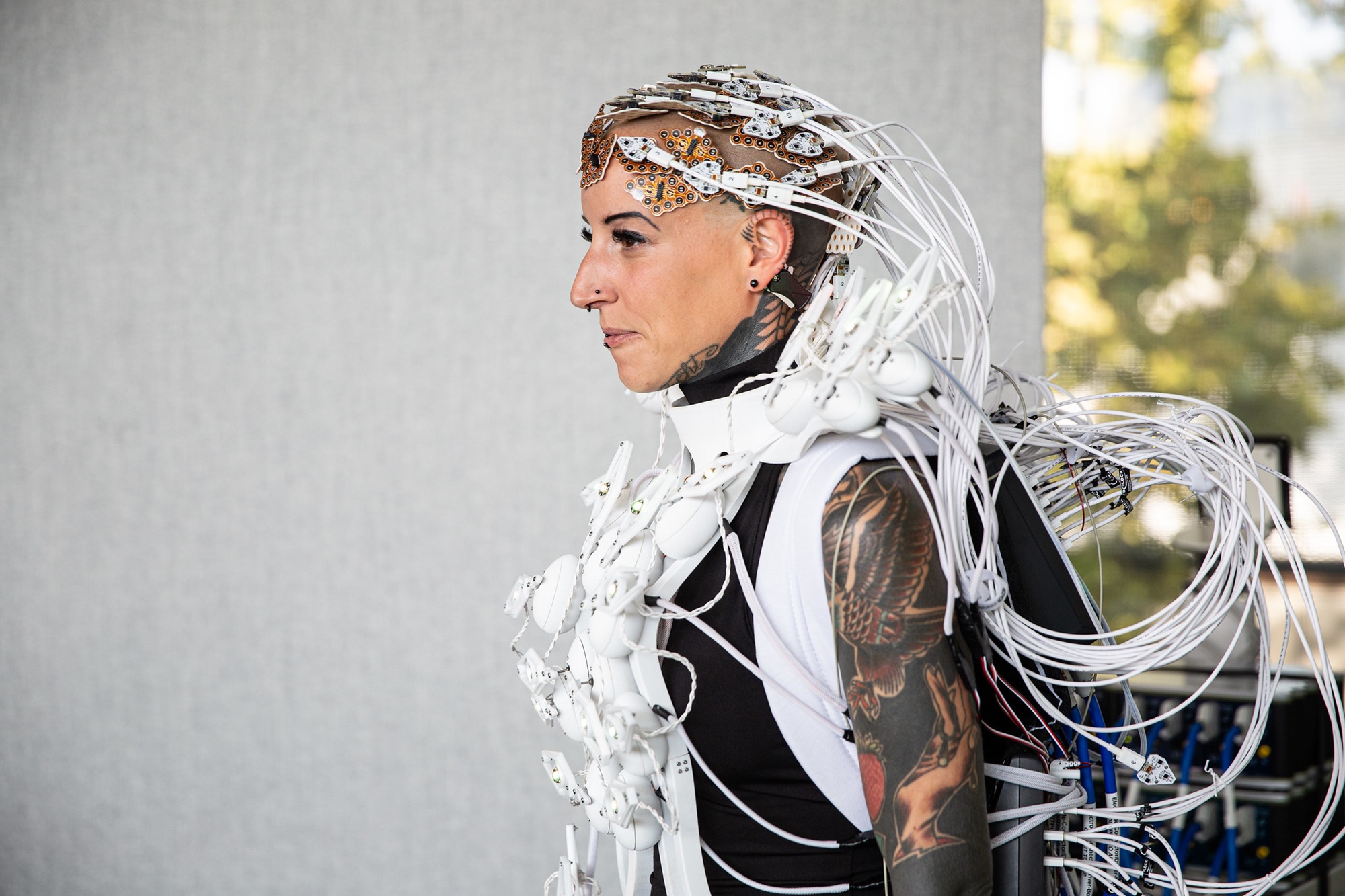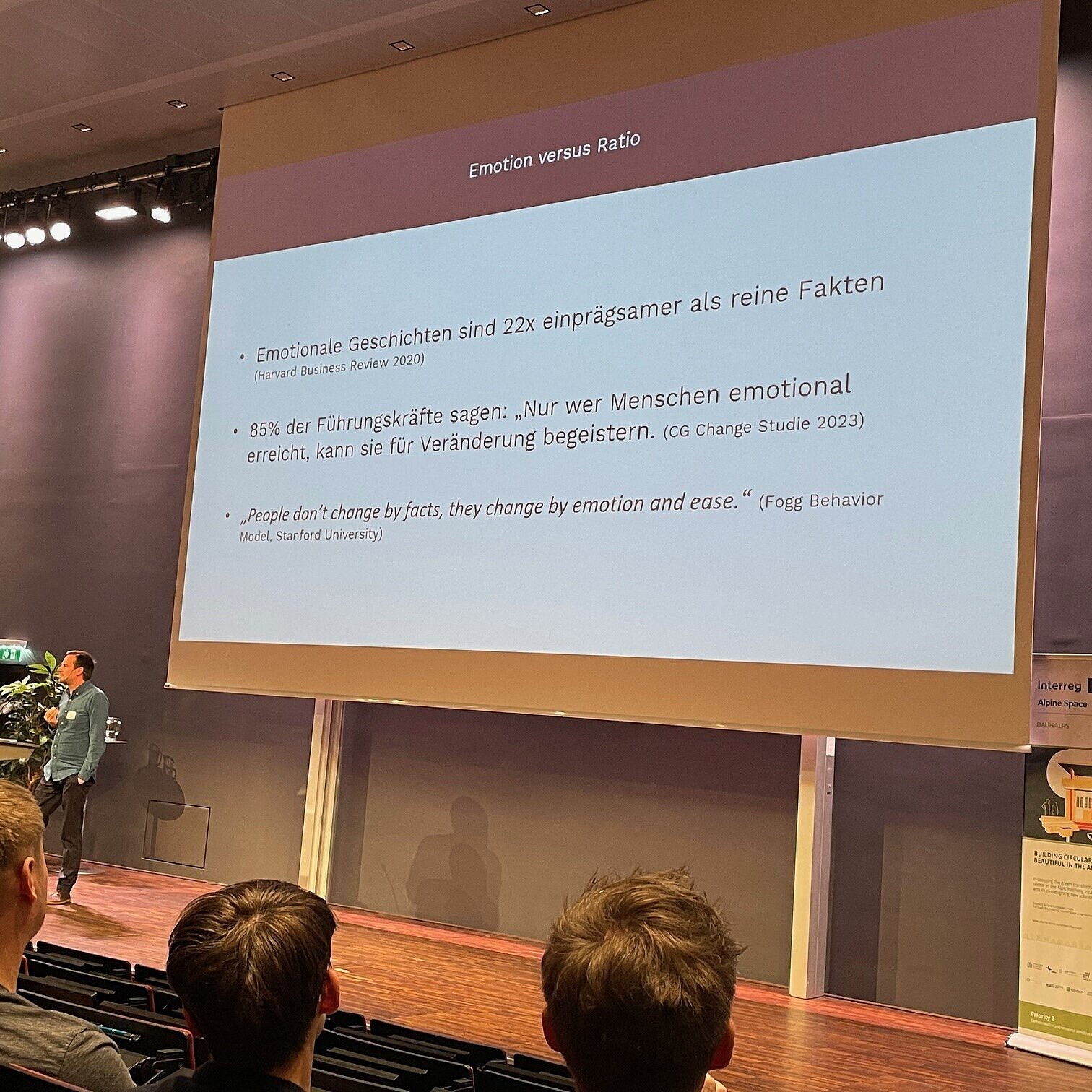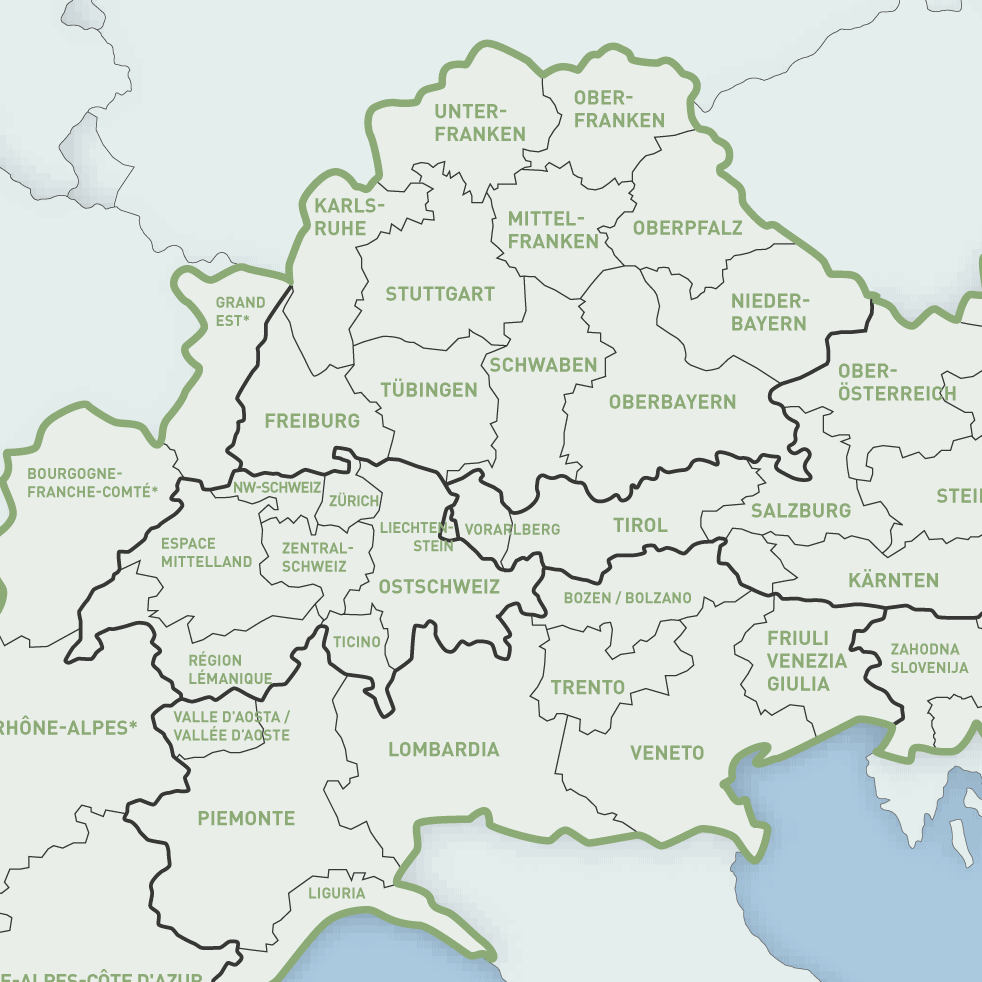Portrait: Betty Mü - video, projection and installation artist
Moves between art and design with her creations
11.09.2024
#bayernkreativPORTRAIT: Bettina Müller, known as Betty Mü, was born and raised in Munich-Schwabing. She spent several years in New York, where she worked as a graphic designer and developed her artistic skills at New York University and the School of Visual Arts. Since her return to Munich, she has established herself as one of the best-known visual jockeys (VJs). She has worked for the Munich City Museum and the Gärtnerplatztheater as well as for numerous companies. She has also appeared several times at ArtMuc, was the only German artist at the Leipzig Light Festival and at various international events. The Munich-based artist now inspires people in several European countries, South America and Africa with her art. Betty is known for her artistic diversity and originality. Her works are characterized by their impressive aesthetics and innovative use of video and LED technology. In this interview, Betty Mü talks about her career, her work and her passion project ...
Dear Betty, as a video, projection and installation artist, you create video mappings, interactive installations, exhibitions and immersive spaces as well as live visuals, moving between art and design. How did you get into video art?
I was certainly inspired by my artistic family. My uncle, for example, was jointly responsible for the set design of films such as "Das Boot" or "The Neverending Story". So I was fascinated by the moving image from an early age. In 1995, after finishing school, I moved to New York, where I worked as a graphic designer and also attended New York University and the School of Visual Arts. In my free time, I experimented with Super 8 cameras and gained my first experiences with video art and live visuals. Back in Munich, I then learned the craft of animation at media companies such as Pro 7 and started my first artistic video installations privately.
You show your work in Europe, America and Africa and have worked for well-known cultural institutions, companies and organizations. How would you describe your creative process when you start a new project? What challenges do you typically face when realizing your artistic vision?
There is no standardized process or recipe along the lines of "how do I bake my art". I often start with topics that move and inspire me, that I think about or that I can relate to. Or I let myself be driven by the desire to experiment. Then I try out new techniques, perhaps combining them with classic craftsmanship, which can result in something excitingly new. Sometimes, however, poetic images simply collect in the back of my mind, which I only bring out again years later when their time seems to have come. Last but not least, there are many works that I continue to develop over time - and which are wonderfully alive in this way.
What themes or motifs do you deal with in your art and why are they important to you? Which art forms inspire you?
I am moved by many topics that often have to do with the individual in society. For example, at the Leipzig Light Festival, I used an oversized walk-in kaleidoscope to commemorate the Monday demonstrations of 1989 - and at the same time called for civil courage in today's world. With my initiative "VideoArt 4 Future", I deal with the topic of art and climate change. And the topics of femininity and emancipation are also existential for me to this day - I deal with them again and again in my work. Following the latest developments in art, especially in its most progressive forms, immersive and interactive, with AI, VR or AR, is very inspiring for me.
Technical innovation also plays a major role in your work as a video artist. Is there a particular technology or invention that you would like to use one day? Or are you even waiting for a technical innovation?
I'm currently working a lot with augmented reality to take my artwork to another level, and I'm even having my own AR app programmed for this purpose. Artificial intelligence is of course also an incredibly exciting tool. The question is: how can I use it as a means of expression without it destroying the essence and character of my art? For me, AI is as revolutionary as the invention of photography. The portrait painters of that time suddenly had to rethink their approach - but what wonderful things were created afterwards? Picasso once said so beautifully: "I paint things as I think them, not as I see them." With KI, we are now reaching a higher level again.
You were born and raised in Munich-Schwabing and studied and worked in New York. Today you live in Munich and Anzing. Why did you go to New York back then and what made you return to Bavaria?
I love Munich, but somehow it quickly became too cramped and too small for me. Of course, you often only really appreciate many things from afar, so I quickly missed the Bavarian way of life.
Do you have a project close to your heart that you would like to realize?
Yes, of course: I would love to project from a helicopter - for example onto Pariser Platz in front of the Brandenburg Gate in Berlin or onto TimeSquare in New York. So, if you ask me - I'm in!
The Bavarian cultural and creative industries are vital, cooperative, polyphonic and relevant to the future. We introduce you to Bavarian players. What is their business model? What drives them?
Would you also like to answer a few questions and be part of our "bayernkreativPORTRAIT" campaign? Then send us an email to kontakt@bayern-kreativ.de with the keyword "bayernkreativPORTRAIT".
